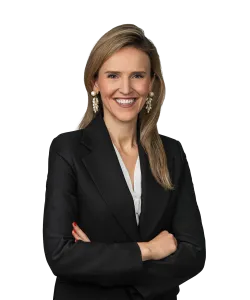Fed Once Again Expands Main Street Lending Program for Hotel Owners and Operators
Effective June 20, 2020, the Federal Reserve updated its Term Sheet and Frequently Asked Questions (the “Updated FAQs”) describing the Main Street Lending Program (the “Program”) to expand the number of businesses that may be eligible to borrow under the Program.
The following is an updated version of previous Client Alerts released on April 12, 2020, and on May 8, 2020, to highlight certain updates to the Program.
The Program now offers longer deferment of principal (two years instead of one year) and longer loan terms (five years instead of four years). Loans under the Program also are available to a wider subset of hotel owners and operators, as the minimum loan size for most loan options is now $250,000 (reduced from $500,000) and a single borrower may receive more than one loan under a single Program loan facility (borrowers may still only draw upon one of the New Loan Facility, Priority Loan Facility, or Expanded Loan Facility). Below are details on why the Program (as updated) could be attractive to hotel owners and operators and their lenders.
If you are interested in learning more about the details of the Program, including eligibility requirements and restrictions on the New Loan Facility, Priority Loan Facility, and Expanded Loan Facility loans, click on this link.
1. Why is the Program (as updated) beneficial for hotel owners and operators?
Attractive Interest Rates/Deferred Payments.
The loan terms of the Program are very attractive because the interest rate is relatively low (LIBOR (1 or 3 month) plus a fixed spread of 3%), principal will be deferred for two years, and interest will be deferred for one year. Program loans will have a term of five years.
Additional to Paycheck Protection Program and Economic Injury Disaster Loan Benefits.
The Updated FAQs reflect that a business that has received a Paycheck Protection Program loan or an Economic Injury Disaster Loan may be eligible for loans under the Program so long as such business otherwise qualifies for the Program. So, if an eligible hotel owner or operator has already received relief, they may not be automatically disqualified from receiving more relief under the Program. Note, however, that unlike Paycheck Protection Program loans, Program loans are not eligible for loan forgiveness.
Favorable Program Changes to Permit More, Smaller Loans.
As updated, the Program will offer more options to a wider set of eligible hotel owners and operators. Smaller hotel owners and operators may be eligible to access loans through the Program because the minimum loan size for the New Loan Facility and Priority Loan Facility under the Program was reduced to $250,000 (formerly $500,000). Moreover, while Eligible Borrowers under the Program (“Eligible Borrowers”) may only participate in one of the Program loan facilities, an Eligible Borrower may receive more than one loan under a single Program loan facility, provided that the sum of loans under the New Loan Facility do not exceed $35 million, the sum of loans under the Priority Loan Facility do not exceed $50 million, and the sum of loans under the Expanded Loan Facility do not exceed $300 million.
2. What are the updated requirements to be an “Eligible Borrower” for the Program?
The Updated FAQs provide that Eligible Borrowers must demonstrate that they are “unable to secure adequate credit accommodations from other banking institutions.” This does not mean that no credit is available to such borrowers from other sources or that applications for credit available elsewhere are inadequate. Rather, an Eligible Borrower must certify that it is unable to secure “adequate credit accommodations” because the amount, price, or terms of credit available from other sources are inadequate for the borrower’s needs during the current unprecedented circumstances.
Further, the updated Program terms also include the following:
- Date of Establishment. An Eligible Borrower must certify that it was established prior to March 13, 2020, to qualify for the Program.
- US Business Requirement. Eligible Borrowers must be “businesses that are created or organized in the United States or under the laws of the United States and that have significant operations in and a majority of its employees based in the United States.” An Eligible Borrower may be a subsidiary of a foreign company, provided that the borrower itself is created or organized in the United States or under the laws of the United States, and the borrower on a consolidated basis has significant operations in and a majority of its employees based in the United States. However, an Eligible Borrower that is a subsidiary of a foreign company must use the proceeds of a Main Street loan only for the benefit of the Eligible Borrower, its consolidated U.S. subsidiaries, and other affiliates of the Eligible Borrower that are U.S. businesses.
- Priority Loan Facility to Repay Existing Debt. The Priority Loan Facility is the only loan facility in the Program that allows an Eligible Borrower at the time the Priority Loan Facility is originated to refinance existing debt owed to other lenders (and not the lender financing the Priority Loan Facility). After origination and until the Priority Loan Facility loan is repaid in full, the Eligible Borrower must refrain from repaying the principal balance of, or paying any interest on, any debt other than the Priority Loan Facility loan, unless the debt or interest payment is mandatory and due. Borrowers may not use loan proceeds under the New Loan Facility or the Expanded Loan Facility to prepay other loans and may not cancel or reduce other committed credit lines.
- Limits on Distributions. Until 12 months after the date on which the Program loan is no longer outstanding, the Eligible Borrower may not pay dividends or make other capital distributions with respect to the Eligible Borrower’s common stock equivalents. “Common stock equivalents” includes common stock in a corporation and equivalent interests in a partnership, limited liability company, a business organized as a trust, or other legal entity. “Dividends and other capital distributions” means any payment made with respect to the Eligible Borrower’s common stock equivalents, including a discretionary dividend payment, but does not include repurchases or redemptions. Furthermore, preferred stock or any other equity interest in an Eligible Borrower that provides for mandatory or preferential payment of dividends or other distributions shall be subject to these restrictions unless both the equity interest and the obligation to pay dividends or distributions existed as of March 27, 2020.
3. What are the differences (as updated) between the New Loan Facility, the Priority Loan Facility, and the Expanded Loan Facility?
| Loan Options | New Loan Facility | Priority Loan Facility | Expanded Loan Facility |
|---|---|---|---|
| Type | New Loan | New Loan | Upsized Tranches of Existing Loans with remaining term of at least 18 months |
| Term | 5 years | 5 years | 5 years |
| Minimum Loan Size | $250,000 | $250,000 | $10M |
| Maximum Loan Size | Lesser of: (a) $35M, and (b) amount when added to existing outstanding undrawn available debt is not greater than 4x 2019 adjusted EBITDA |
Lesser of (a) $50M, and (b) amount when added to existing outstanding undrawn available debt is not greater than 6x 2019 adjusted EBITDA |
Lesser of (a) $300M, and (b) amount when added to existing outstanding undrawn available debt is not greater than 6x 2019 adjusted EBITDA |
| Risk Retention | 5% | 15% | 5% |
| Principal Amortization* | Years 3–5: 15%, 15%, 70% balloon payment | Years 3–5: 15%, 15%, 70% balloon payment | Years 3–5: 15%, 15%, 70% balloon payment |
| Rate | LIBOR + 3% | LIBOR + 3% | LIBOR + 3% |
| Debt Priority | May not include any provisions that would cause the loan to be contractually subordinated to other debt in or outside of bankruptcy. |
May not include any provisions that would cause the loan to be contractually subordinated to other debt in or outside of bankruptcy. Must include a standard lien covenant or negative pledge that is of the type and that contains the exceptions, limitations, carve-outs, baskets, materiality thresholds, and qualifiers that are consistent with those used by the Eligible Lender in its ordinary course lending to similarly situated borrowers.* |
May not include any provisions that would cause the loan to be contractually subordinated to other debt in or outside of bankruptcy. Any collateral securing the Existing Loan must secure the MSELF Upsized Tranche on a pari passu basis. Must include a standard lien covenant or negative pledge that is of the type and that contains the exceptions, limitations, carve-outs, baskets, materiality thresholds, and qualifiers that are consistent with those used by the Eligible Lender in its ordinary course lending to similarly situated borrowers.*+ |
| Borrower Certifications and Covenants Material Breach Mandatory Prepayment | Must include a Borrower Certifications and Covenants material breach mandatory prepayment provision.* | Must include a Borrower Certifications and Covenants material breach mandatory prepayment provision.* | Must include a Borrower Certifications and Covenants material breach mandatory prepayment provision.* |
*Appendix B to the Updated FAQs provides model provisions.
+ Where the underlying loan is part of a multi-lender facility, any lien covenant or negative pledge that was negotiated in good faith prior to April 24, 2020, as part of the underlying loan shall be deemed sufficient.
4. How to apply for the Program?
While the Federal Reserve has opened the Program for lender registration, the Program is not yet open for borrower registration. The Federal Reserve advises on its MSLP Policy Tools webpage that once the Program is operational, businesses can apply for Program loans by contacting an eligible lender. In the meantime, it may be helpful for hotel owners and operators to gather supporting documentation and consider contacting possible lending relationships to advance discussions in connection with possible financing under the Program.


